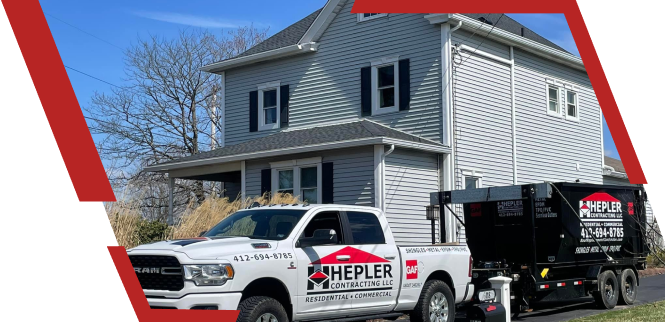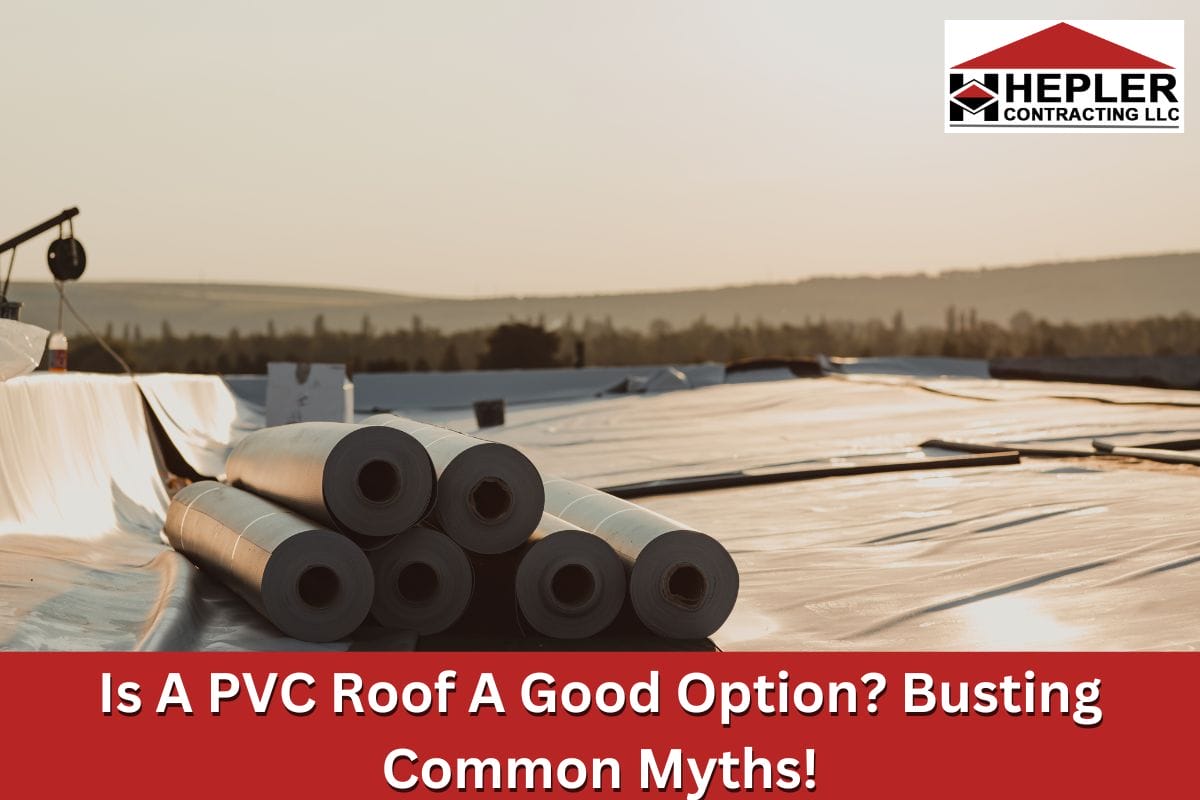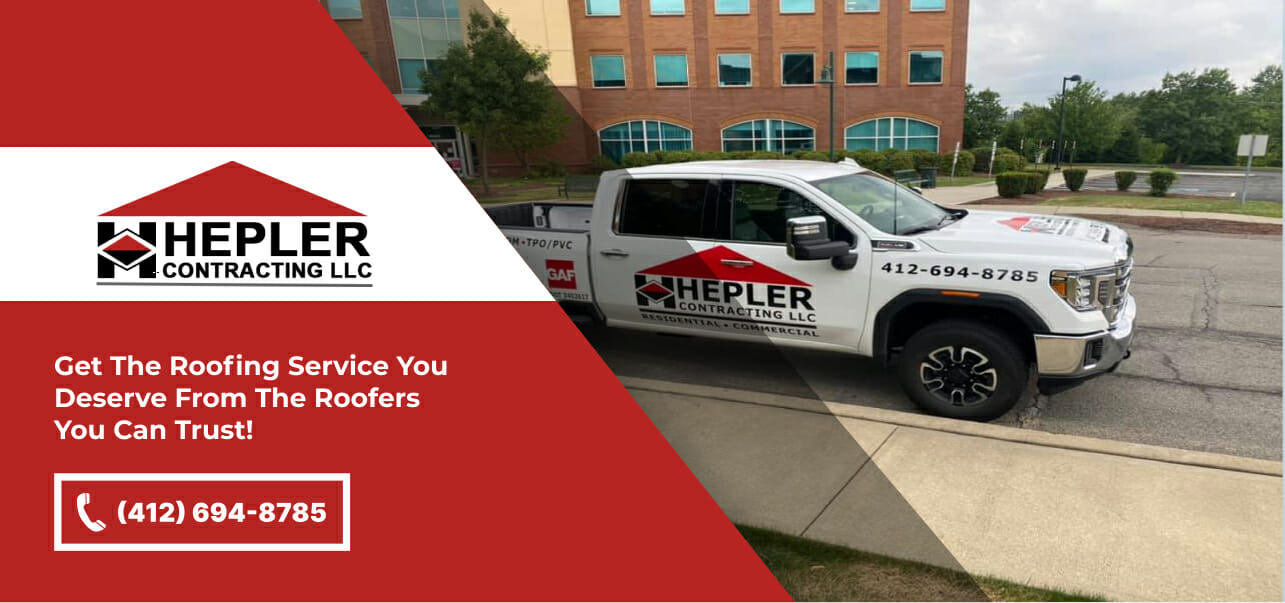Do you need a better roofing material for your property? There are lots of options out there, and you might have heard about PVC. This material is suitable for flat and low-slope roofs and comes with plenty of benefits. However, there are a few misconceptions associated with this material.
In today’s post, we’ll explore whether a PVC roofing membrane is right for you. Read on as we explain all about this popular roofing material, and break down some common myths.
What Are PVC Roofs?
PVC stands for polyvinyl chloride. It’s one of the most produced synthetic plastic polymers in the world. But did you know that it has found widespread acceptance in the roofing industry, too? Indeed! PVC comes as a single-ply roofing solution often used on commercial buildings due to its resistance to chemicals and relatively better durability. These finely crafted membranes consist of two layers: the top ply contains UV-resistant components, while the bottom ply includes additional structural elements and plasticizers.
Key Properties and Benefits of PVC Roofing Materials

PVC has risen among the ranks as a popular choice in roofing materials due to several distinct advantages.
- Durability: As noted before, this sturdy material can withstand harsh weather conditions and last for at least 30 years.
- Fire Resistance: The chemical composition of PVC resists igniting under flame. In the event of a fire outbreak, a roof made from PVC would not fuel the flames, but instead help limit their spread.
- Energy Efficiency: Besides being eco-friendly by producing a lower heat-island effect, a white or light-colored membrane can reflect more sun rays, and therefore, lower the need to use air conditioning units in a building.
- Resistance to Chemicals: If your property encounters frequent exposure to chemicals, such as with a car repair shop or factory perhaps, then installing a PVC roof can be a good strategy as the material can resist chemical influence.
- Lightweight: You won’t have to worry about the load-bearing capacity of your building thanks to the remarkable lightness of PVC.
- Insulation: Studies suggest that installing a PVC roof could lead to a reduction in annual energy costs by as much as 40%.
To sum it up, this single-ply roofing membrane might provide you with numerous unexpected perks. However, like any other product on the market, it has its downsides as well.
Types of PVC Membranes
Variety is certainly important when it comes to roofing materials. Three primary categories of PVC material dominate.
- Non-reinforced PVC: While less common for full-scale commercial projects due to being somewhat less durable than reinforced versions, this type still holds merit in certain weather conditions.
- Fabric-reinforced PVC: Appreciated widely for its outstanding performance and longevity, fabric-reinforced PVC membranes consist of a layer of polyester or fiberglass sandwiched between two layers of PVC material.
- Fleece-backed PVC: This fantastic innovation borrows strength from a cushion-like polyester fleece, which acts as an additional layer, giving added robustness and insulation capacity.
Let’s do a quick comparison now with some other popular roofing material options.
A Comparison Between PVC And Other Flat Roofing Materials
Compared to EPDM, another flat roofing membrane, one area where PVC wins out is in terms of resistance to chemicals, be it oil or grease. It also outperforms TPO when it comes down to solar reflectivity.
TPO also has good chemical resistance, but its lifespan is relatively shorter, lasting no longer than 23 years. On the other hand, EPDM and PVC have a similar lifespan of 30 years.
Also Read: TPO vs PVC Roofing: Which Material is Right for Your Roofing Needs?
Busting Myths About PVC Roofs
There are a lot of misconceptions about this roofing material, so let’s bust them one by one.
Myth#1 PVC Can Never Be An Eco-Friendly Material
While producing these membranes is not entirely easy on Mother Nature, it still has some benefits that reduce waste.
When a PVC roof reaches the end of its lifespan, it can be ground down and molded into new PVC products for reuse. The recycling process offers an environmental advantage over less eco-friendly options that often end up in landfills. Notably, virtually every part of a PVC membrane can be recycled for post-consumer use – this includes both heat-weldable and mechanically attached systems.
Advancements in technology are also minimizing the hazard of creating these membranes while maximizing efficiency throughout the production stage. Manufacturers have also embraced sustainable practices like cool roofs, which reduce the urban heat island effect, thereby promoting energy conservation overall.
Myth#2 PVC Roofing Systems Are Cheap
PVC roofing systems have seen an increase in their popularity due to their durability and long lifespan. However, it’s not a cheap option, but it is surely affordable for many properties. As per our research, the average price range sits at around $7 to $10 per square foot for PVC roofing material. This price range is higher than modified bitumen and felt roll roofing but less than that of TPO and EPDM. The cost typically includes old roof removal, preparation work such as repairs, and installation, along with all supplementary elements like trim detailing or skylight integration where needed.
Myth#3 PVC Roofs Have Limited Color Options
Luckily, modern PVC roofing systems offer a wealth of colorful advantages. Forget the idea of bland and uninspiring shades when it comes to PVC roofs. The industry now provides a broad range of colors, including black and brown to beige and white. Choosing a light color can improve your property’s energy efficiency by reflecting sunlight rather than absorbing it. This contributes positively by maintaining a cooler indoor temperature on warm days.
Myth#4 PVC Membranes Cannot Be Customized
Generally, you’ll find non-reinforced, monolithic (or single-ply) membranes that are smooth to the touch. These offer a minimalist aesthetic with impressive water-shedding capabilities. Alternatively, you can opt for another version, for example, fleece-backed membranes, if durability and rigidity top your list of requirements. These make the membranes thicker, therefore supplying thermal resistance, another bonus benefit of this sturdier membrane variant!
If you decide a PVC roof is for you, and want to install one on your home or building, you should know how to take care of it and achieve long-term results.
Maintenance And Care For PVC Roofing Membranes
For a PVC roofing system, particular upkeep methods ensure the membrane remains solid over time. Here’s what you can do:
- Regular Inspections: Conduct bi-annual inspections, preferably during spring and fall when the weather is less intense.
- Clear Debris: Regularly clear debris from your roof, particularly the drainage areas, to prevent water accumulation that may cause gradual structural erosion.
- Checking Seals & Seams: Examine seals around vents, skylights, or other roof installations and reinforce them if they’re loose or damaged. Similarly, check the seams between PVC membrane sheets to avoid potential leakages.
- Prompt Repair: Upon detecting an issue such as brittle areas, punctures, or spots of wear on your PVC roofing material, seek professional repair services immediately so that small flaws do not magnify into serious damage due to neglect.
- Professional Cleaning: Annually engage professionals to clean your PVC roofing membrane thoroughly. They have the experience and knowledge to clean it without causing harm through the incorrect use of cleaning agents or aggressive techniques.
All the above-mentioned practices play important roles in preserving the functional and aesthetic appeal of your PVC roof.
Remember, preventive maintenance outclasses reactive repairs every single time when it comes to overall cost-effectiveness and property value. Adherence to these expert guidelines paves the path towards enjoying an enduring, efficient, and resilient PVC roof, offering lasting protection against diverse weather conditions.
If you need more information or professional insights into PVC roofing systems, or any other roofing material, our experts are here to help.
Discuss Your Commercial Roofing Needs With Pittsburgh’s Experts!
At Hepler Contracting, we work with all types of materials made for flat and low slope roofs. As Pittsburgh’s reputable professionals, we work hard to make sure all properties in the area have a safe and secure roof. Our experts have been upgrading commercial buildings for many years, and they can tell you exactly what your business needs. If you are looking for a PVC roof, or any other commercial roofing service in Pittsburgh, PA, you can rely on our talented and trustworthy team for perfect results! Give us a call at (412) 694-8785, and schedule a free consultation with one of our experts today. Let us help you get a durable, customized, and cost-effective roof for your building.
FAQs
A. Typically, a well-maintained PVC roof has an average lifespan of around 20 to 30 years. A recent study by the NRCA (National Roofing Contractors Association) suggested that with annual maintenance checks, high-quality PVC roofs could last even beyond their projected life expectancy!
A.Yes! One significant advantage is its sturdy quality, designed to withstand standard foot traffic. Due to advancements in construction technology used today, walking on a PVC roof won’t damage it as long as you adhere to the guidelines.


